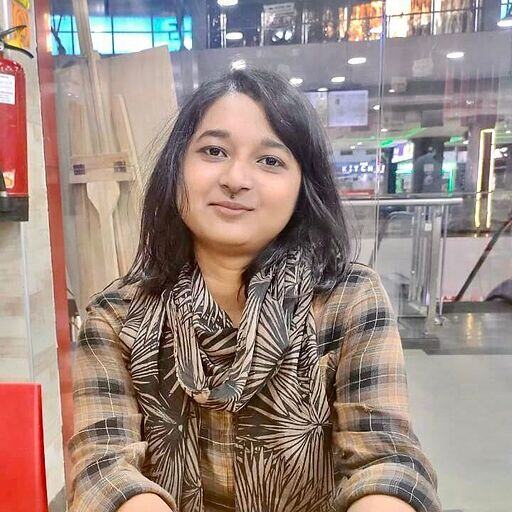April 25, 2023
 by Bridget Poetker / April 25, 2023
by Bridget Poetker / April 25, 2023

Seeing the current face of technology, Charles Babbage would be over the moon.
We've come a long way from interpreting binary morse codes to assembly languages and high-level, object-oriented app programming.
The early instance of app programming language began in 1960, when Bjarne Stroustrup invented C. C was the first procedure-oriented language used to develop software applications. Different integrated data environments have been launched since then, which are simpler to code in, and are open-sourced and easy project builders.
App programming language is a thread of instructions coded in a console-based or web-based environment to develop software or mobile applications. Popular programming languages used to develop mobile or desktop apps today are Swift, Ruby on Rails, Java, PHP, and JavaScript.
If we had an app for every activity, we wouldn't walk at all. Between exerting efforts to complete a task or just opening a mobile application for it, many chose the latter.
Product design and development is the core use case of app programming. After the structure and design of a product are laid out, it is the job of the backend engineer to encode it. The software engineer selects SDK, writes code, checks for bugs, and passes it to the testing team.
With the growing prominence of mobile utility, the number of app downloads for iOS and Android operating systems has gone off the hook. What people don't realize is why the need even existed in the first place.
Mobile application downloads are at an all-time high. For every minor activity, an app exists today. Since the launch of smartphones, routines have been digitized. From booking a cab to ordering food to e-commerce to fashion, the digital babble never ends.
To expand the footprint of a digital economy, software developers are searching for seamless app programming languages that would create responsive and user-friendly apps. With hundreds of languages and different concepts to learn, app developers struggle to write good code. Fortunately, software development kits give a beginner's push to developers starting afresh in the software domain.
Imagine if we wanted to book a movie ticket and had to walk ten blocks to the multiplex for that. It sounded fine in the bygone days but haphazard for today's generation. Booking tickets online and pre-reserving your seats through the mobile app saves a ton of time. With live streaming OTT apps like Amazon Prime and Netflix, theaters have almost closed their shutters. App programming has curled the world into one matrix, where everyone chooses comfort over struggle.
When it comes to choosing the best programming language, it can largely depend on the type of app you’re planning to build. For example, if you’re developing a 3D game, chances are you’ll want to use C++. If you are developing a telecom billing system or a school admission system, you can use .NET Framework or Visual Basic 6.0. In short, before choosing your tools, remember that there are different options available for different types of apps.
Brilliant minds have spotted a clear difference between Android apps and iOS apps. What draws a line between these two operating systems? Let's see which languages are used to code Android and iOS apps.
Swift is a programming language developed and built by Apple to build mobile and web applications. Swift is platform-independent and can be used for any version of macOS, including watchOS, IpadOS, tvOS, and iOS.
To develop iOS apps, you should know Swift – plain and simple. Swift is an open-source language, meaning anyone is welcome to contribute to it. It’s a static language with the main advantages being speed and security. The language is less tedious than others, as the syntax is generally cleaner, omitting the bells and whistles. Swift has a growing developer community and a wide variety of resources behind it, which makes it less daunting for new programmers.
Finally, Swift also scales easily. It’s simple to maintain as code written in earlier versions of Swift can be updated quickly. It also uses Automatic Reference Counting (ARC) to manage your app’s memory usage in real-time.
Java is an object-oriented programming language that can be used across multiple platforms. Sun Microsystems launched it in the year 1995 when James Gosling led a team of researchers in an effort to create a new language for electronic devices.
Java is divided into two languages: core and advanced. Core Java mainly deals with object-oriented concepts and basic logic, like exception handling, garbage collection, palindrome, reverse strings, or data structures, whereas advanced Java aims at developing mobile user interfaces through servlets and applets. These tools extend the applicability of servers through request reprimanding and network protocols. Java is also compiled in a binary byte code with Java virtual machine (JVM) and executed in Java runtime environment (JRE).
Python is a high-level, object-oriented programming language used to create, train and test machine learning models. It is a statistical interpretation tool that helps us study existing data, train algorithms, and test it for incoming datasets.
Often programmers fall in love with Python, and the reason is its easy adaptability, pre-defined functions, and code repurposing. C++ or Java code can be repurposed as Python code, mostly because of the similarities in the code syntax. It is easy to load datasets containing endless rows of data in Python. Python has pre-installed libraries like Scikit, Numpy, Matplotlib, and Panda that contain modules and relational operators. These libraries can be imported into the main program to perform specific functions like the creation of 2D graphs, dimensionality reduction, noise reduction, data cleaning, good fit model, and data testing.
Python is also used for RAD (rapid application development), just like Java, since it has an immense amount of exception-handling features and a faster edit-test-debug cycle. Python identifies memory leaks faster, debugs faster, and creates good-fit models to test datasets and create business predictions. Python is configured and executed in IDEs like Jupyter or Spyder.
Ruby is a dynamic, open-source programming language known for its readability and flexibility. It is mostly used by web app development companies to create platforms with interactive and grid-based UI. Ruby supports multiple web and console application layouts and is a preferred language for Rapid Application Development.
Ruby is a standard language with pre-defined syntaxes, which makes the application development process simple for software developers. It dynamically binds three existing web programming languages (HTML, CSS, and Javascript) to create responsive and dynamic web platforms. Its design is based on an MVC architecture with three components, namely:
MVC is the glue between the application logic layer and the web UI layer that revved up the engine of data requests. It receives requests for applications and works in sync with data to generate the required results displayed by the view.
React Native is a Javascript framework that can be used to write apps for Android and iOS platforms. It is mainly used to develop websites, browser-based applications, and mobile applications. It is the popular technology behind the recently spurted concept of gamification, where animated characters and popups are used to increase UI friendliness. React Native is also used to embed multimedia files like videos and gifs within web pages.
React Native is an open-source programming language successfully adopted by hundreds of leading SaaS businesses worldwide, including Skype, Uber, and Microsoft. React Native is based on core javascript syntaxes, with a slight variation of markup languages like Javascript object notation (JSON) and Javascript XML (JSX).
Elixir is a congruent and open-source programming language designed to develop mobile applications which are user-friendly in nature. It runs on Erlang VM, which creates low latency, quick functioning, and fault-tolerant software systems. Elixir is a mixed breed of JavaScript, XML, HTML, and CSS used for several domains like data integration, API stacking, multimedia processing, and data pipelines.
There are different types of mobile apps that you can create today. A few are restricted to a particular operating system, while others can only be used as a desktop version and not on mobile. Web applications are programmed differently than system applications and are built on a completely different logic.
Bootstrapped systems are launched with kernels, whereas websites are coded in advance PHP. Whatever the type, understanding the app design before sitting down to code is the way forward.
It's imperative to brush up on the basics of app programming languages before diving into the software development race. Be clear with the basics of algorithmic expressions, understand what each internal operator does, watch tutorials, and set about to program your first assignment. Sooner, you'd be running tech stacks and going on-site to fulfill your dreams.
Still searching for ways to use integrated data environment platforms to reduce coding labor? Check out our free resource.
This article was originally published in 2019. It has been updated with new information.
Bridget Poetker is a former content team lead at G2. Born and raised in Chicagoland, she graduated from U of I. In her free time, you'll find Bridget in the bleachers at Wrigley Field or posted up at the nearest rooftop patio. (she/her/hers)
Choosing between Asana and Monday can be tricky. These project management software programs...
 by Sagar Joshi
by Sagar Joshi
Keeping projects on track didn't always seem difficult to me. I still remember my first big...
 by Jaya Bordoloi
by Jaya Bordoloi
From interstate roads to international canals, civil engineering has had a direct impact on...
 by Michael Gigante
by Michael Gigante
Choosing between Asana and Monday can be tricky. These project management software programs...
 by Sagar Joshi
by Sagar Joshi
Keeping projects on track didn't always seem difficult to me. I still remember my first big...
 by Jaya Bordoloi
by Jaya Bordoloi


